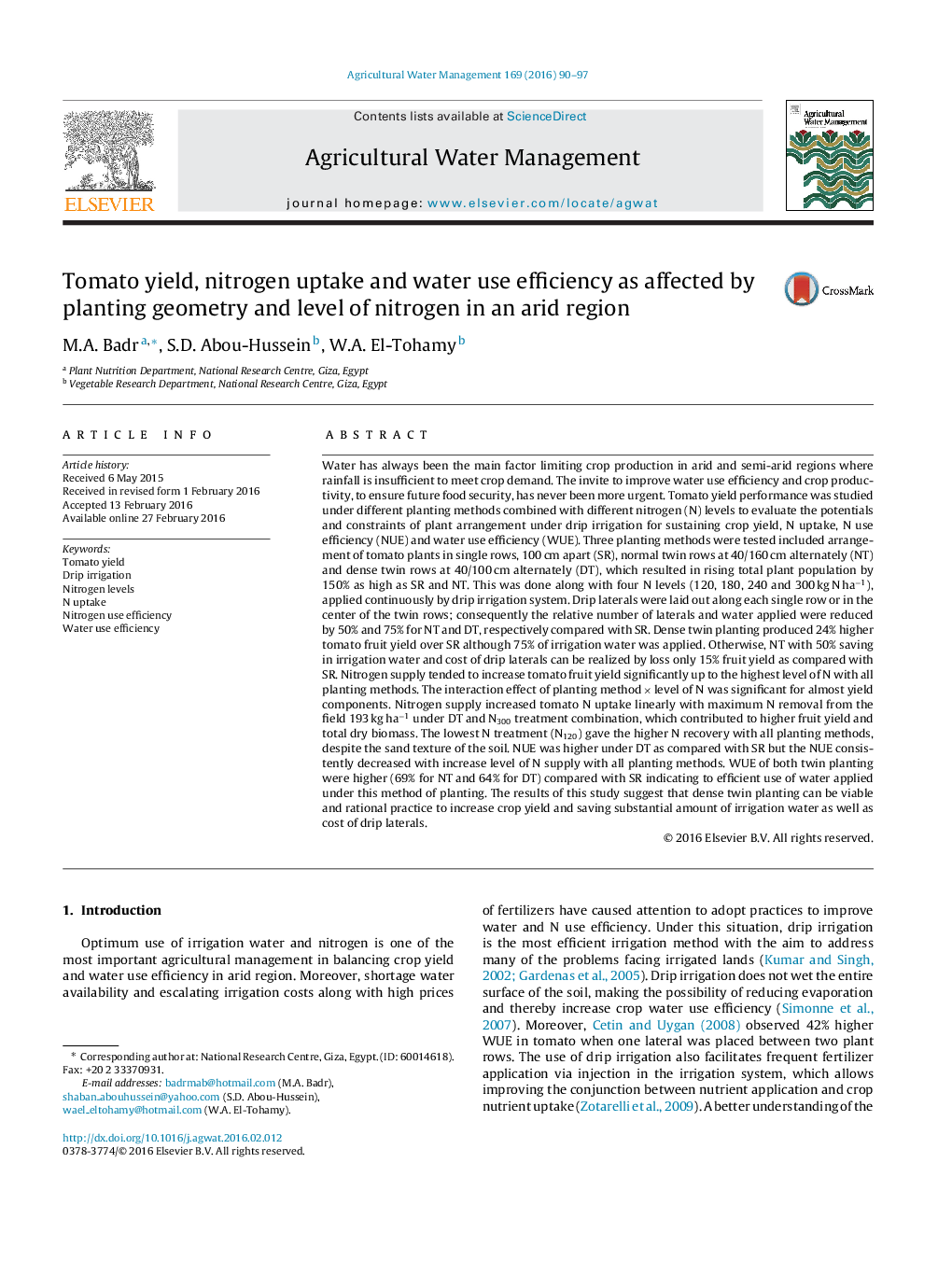| کد مقاله | کد نشریه | سال انتشار | مقاله انگلیسی | نسخه تمام متن |
|---|---|---|---|---|
| 4478281 | 1622911 | 2016 | 8 صفحه PDF | دانلود رایگان |
• Drip irrigation requires a high capital investment and great management skills to grow crop successfully.
• Tomato fruit yield considerably affected by various planting arrangement and nitrogen level under drip irrigation system.
• Dense twin planting maintained higher tomato yield with saving 25% of water and cost of drip lines.
• Nitrogen levels had a marked influence on total fruit yield and fruit weight although the response was different between N levels.
• Water use efficiency was considerable higher under both twin planting methods which preserved more water for plant uptake.
Water has always been the main factor limiting crop production in arid and semi-arid regions where rainfall is insufficient to meet crop demand. The invite to improve water use efficiency and crop productivity, to ensure future food security, has never been more urgent. Tomato yield performance was studied under different planting methods combined with different nitrogen (N) levels to evaluate the potentials and constraints of plant arrangement under drip irrigation for sustaining crop yield, N uptake, N use efficiency (NUE) and water use efficiency (WUE). Three planting methods were tested included arrangement of tomato plants in single rows, 100 cm apart (SR), normal twin rows at 40/160 cm alternately (NT) and dense twin rows at 40/100 cm alternately (DT), which resulted in rising total plant population by 150% as high as SR and NT. This was done along with four N levels (120, 180, 240 and 300 kg N ha−1), applied continuously by drip irrigation system. Drip laterals were laid out along each single row or in the center of the twin rows; consequently the relative number of laterals and water applied were reduced by 50% and 75% for NT and DT, respectively compared with SR. Dense twin planting produced 24% higher tomato fruit yield over SR although 75% of irrigation water was applied. Otherwise, NT with 50% saving in irrigation water and cost of drip laterals can be realized by loss only 15% fruit yield as compared with SR. Nitrogen supply tended to increase tomato fruit yield significantly up to the highest level of N with all planting methods. The interaction effect of planting method × level of N was significant for almost yield components. Nitrogen supply increased tomato N uptake linearly with maximum N removal from the field 193 kg ha−1 under DT and N300 treatment combination, which contributed to higher fruit yield and total dry biomass. The lowest N treatment (N120) gave the higher N recovery with all planting methods, despite the sand texture of the soil. NUE was higher under DT as compared with SR but the NUE consistently decreased with increase level of N supply with all planting methods. WUE of both twin planting were higher (69% for NT and 64% for DT) compared with SR indicating to efficient use of water applied under this method of planting. The results of this study suggest that dense twin planting can be viable and rational practice to increase crop yield and saving substantial amount of irrigation water as well as cost of drip laterals.
Journal: Agricultural Water Management - Volume 169, May 2016, Pages 90–97
